
Ordering Information Blood Collection Systems
Ordering Information Blood Collection Systems
Language:
Some of the data collected by this provider is for the purposes of personalization and measuring advertising effectiveness.
We do not use cookies of this type.
Some of the data collected by this provider is for the purposes of personalization and measuring advertising effectiveness.
Some of the data collected by this provider is for the purposes of personalization and measuring advertising effectiveness.
We do not use cookies of this type.
The liquid Ca2+ balanced heparin enables rapid and optimal mixing of blood and anticoagulants. The Blood Gas Monovette® is available in 1 and 2 ml options and has been designed for venous and arterial blood collection. The blood gas capillaries offer a nominal volume range of 100–175 µl.
Membrane adapter, connection: Luer, for S-Monovette® needle/Multifly® needle, 1 piece(s)/blister, 100 piece(s)/case, sterile, non-pyrogenic/endotoxin-free
Blood Gas Monovette®, preparation: calcium-balanced lithium heparin, nominal volume: 1 ml, cap white/orange, label/print: transparent/orange, connection: Luer (m), (LxØ) without cap: 66 x 11 mm, with Ventilator assembled, 1 piece(s)/blister, sterile, 100 piece(s)/case
Blood Gas Monovette®, preparation: calcium-balanced lithium heparin, nominal volume: 1 ml, cap white/orange, label/print: transparent/orange, connection: Luer (m), (LxØ) without cap: 66 x 11 mm, 50 piece(s)/case, sterile, 50 piece(s)/case
Blood Gas Monovette®, preparation: calcium-balanced lithium heparin, nominal volume: 1 ml, cap white/orange, label/print: transparent/orange, connection: Luer (m), (LxØ) without cap: 66 x 11 mm, 1 piece(s)/blister, sterile, 100 piece(s)/case
Blood Gas Monovette®, preparation: calcium-balanced lithium heparin, nominal volume: 2 ml, cap white/orange, label/print: transparent/orange, connection: Luer (m), (LxØ) without cap: 66 x 11 mm, 50 piece(s)/case, sterile, 50 piece(s)/case


Generally, the oxygen or CO2 status is determined from the blood in a blood gas analysis. In order to do this, it is necessary to ensure that the blood sample is not enriched with oxygen from the excess air.
Yes, Sarstedt offers collection systems for arterial, venous (1 and 2 ml) and capillary (100 µl, 125 µl, 140 µl, 175 µl) sample collection. The Blood Gas Monovette® and the blood gas capillaries are prepared with Ca2+(calcium)-balanced heparin.
Yes, using the membrane adapter Art. No. 14.1112). This is placed on the Luer cone of the Blood Gas Monovette® and the procedure is then completed with the Safety-Needle/Safety-Multifly® needle as usual.
No. Since the Blood Gas Monovette® which has been filled and has had the excess air removed does not have a dead volume, it is recommended that the blood sample is rolled carefully between the palms immediately after collection.
The Blood Gas Monovette® is distinguished by its liquid preparation with Ca2+ -balanced heparin, which ensures rapid mixing of the heparin with the blood.
In this heparin, all of the active binding sites are saturated with calcium, so Ca2+ can be determined from the blood sample without any interference.
At the end of the blood collection, the Blood Gas Monovette® should be twisted in a clockwise direction to remove it from the vascular access. The same applies to connecting and disconnecting to/from an analysis device.
The BGA should be carried out immediately if possible, but no later than 15 minutes after collection.
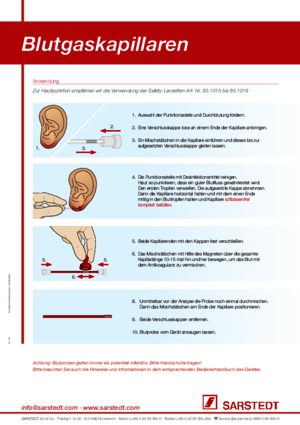
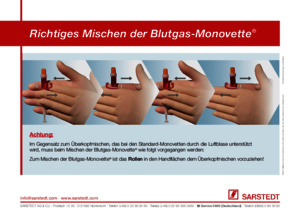
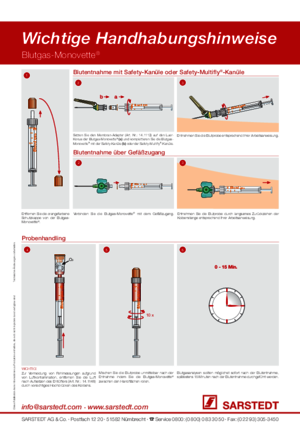
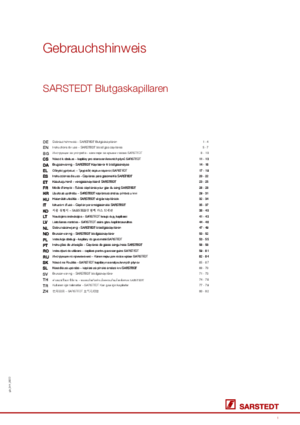
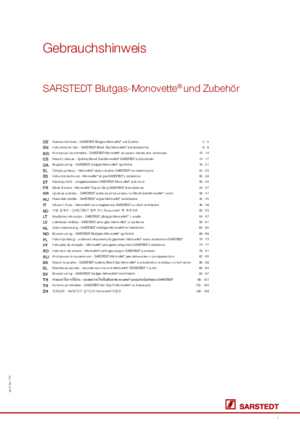

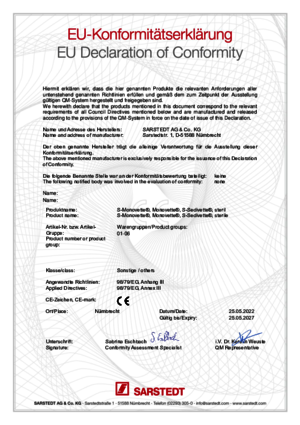
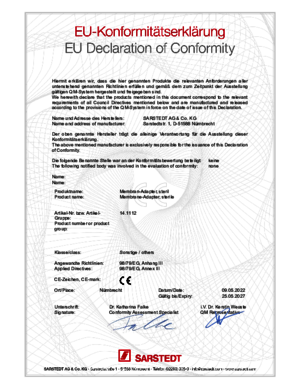
Please select your location, so that we can show you the product range relevant to your country / region.
